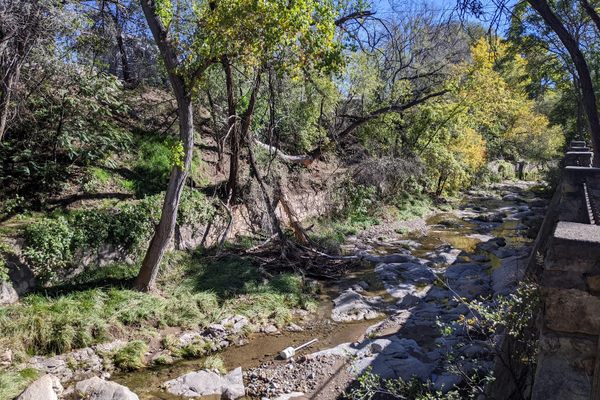Plaza Santos Degollado
A grand entrance to one of the world's smallest Chinatowns.
Dolores Street, in Mexico City’s Historic Center, is home to the city’s Chinatown. Consisting of a mere couple of blocks lined with Chinese-Mexican restaurants and imported curios shops, it has the distinction of being one of the world’s smallest Chinese ethnic enclaves. Nonetheless, the small park that marks its starting point does have a story to tell and sights to show.
This park was built during the historic period known as Porfiriato. Named after Porfirio Díaz, who was Mexico’s president from 1876 to 1911 and a noted Francophile, the period is distinguished by French-style architecture and culture, as well as rapid industrialization. This park was originally distinguished by Neoclassical marble statues and design. Shortly after its inauguration, it was named after Santos Degollado, a notable figure of the pre-Porfiriat0 Reform War.
By the early 21st century, the park was mostly derelict. In 2008, as part of a renovation process for the Historic Center, the park was remodeled and declared the starting point of the city’s Chinatown. To commemorate the occasion, a paifang (Chinese gate) known as Arco Chino was built onsite as a collaboration between Mexican and Chinese artists and architects. Featuring engravings on marble and granite brought over from China, the paifang is one of the most visually-striking features of this Chinatown. The plaza’s redesign also took feng shui into account.
Originally the arch would not be here, but at the entrance of the Callejón de Dolores (the authentic Chinatown). However, when the architects began to assemble, they noticed that it didn’t fit, that’s why they moved to the Degollado Square. The original Chinese lions remained at the entrance to the alley as a testimony. Currently a less aesthetic arch made of metal gives the entrance to the neighborhood.
While Dolores Street might not actually be the home to the more sizable Chinese-Mexican communities, it is one of the most representative symbols of its history. Many Chinese merchants sailed with the Manila Galleon (also known as La Nao de China) during the colonial New Spain period and settled along the Pacific Coast near Acapulco. During the 19th century, further migration saw communities popping up mostly in cities of Northern Mexico like Mexicali and Torreón. During the Mexican Revolution, many Chinese business owners were attacked and even killed due to the nationalistic ideologies of some Revolutionaries.
These incidents led to strained relations between the governments of both countries, although in the almost-100 years since, they have become normalized and even celebrated with collaborations like El Arco Chino.
Know Before You Go
The nearest metro stations are Bellas Artes, Juárez, and San Juan de Letrán.
Community Contributors
Added by
Edited by
Plan Your Trip
The Atlas Obscura Podcast is Back!






























Follow us on Twitter to get the latest on the world's hidden wonders.
Like us on Facebook to get the latest on the world's hidden wonders.
Follow us on Twitter Like us on Facebook